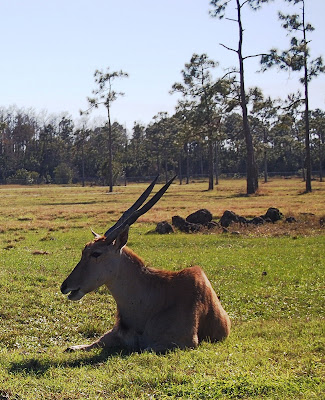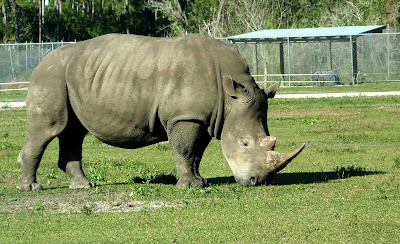This is the anniversary week of my blog. Last year for my birthday, which is also this week on 26-March, my husband and I visited our daughter Céline in California. My daughter who is very knowledgeable with computers, programs and all the new technologies set up the blog for me. It took us a few days to decide how it would look and what it would be called. The photograph of the clouds in the heading was cut from a photo I had taken while flying over Newfoundland, Canada. Then on 30th March 2009 the Introduction was published. It was followed by my first post,quite short, which included a collage from a program my daughter had installed for me on my computer. A year has passed very quickly and this is my 63rd post. Some of my blogging friends published many more posts than I but mine are a bit long so I decided to post them about once a week or so. In French the word “anniversaire” serves double duty. It means “anniversary” of course but also birthday, as this is the anniversary date of one’s birth.

A year ago, when starting this blog, I had no expectations, or any idea about what it might lead to. It has lead to my knowing some wonderful people, from a variety of cities and countries, with different interests and knowledge. I never dreamed that so many of you would read my posts and leave comments. I have truly enjoyed the expression of friendship, feedback, questions and remarks. I am happy to welcome so many new and lovely friends in my home, virtually. It encourages me to research for more posts in the coming year. Thank you all again. Every year for my birthday my mother would give me a potted hyacinth. I bought one this week for you and display it below in a collage.
Rather than continuing with my trip in Florida I thought that for this anniversary I would tell a little story of an early recollection from my childhood in Paris. We lived in a 5th floor “walk-up” apartment (6th floor in the US.) This apartment was in the 9th arrondissement of Paris (there are 20 arrondissements or quarters in Paris.) The 9th is situated to the north, below the basilica of the Sacré-Coeur of Montmartre, and to the south, the Opéra Garnier.

Our building was in a “cité” which is an enclosed courtyard usually with no outlet. The entrance gate was never closed.

I used to play in the courtyard with my best friend, Nadia, and another 3 or 4 children.

Once out of the cité and crossing the street we could walk up the street to the Sacré-Coeur in 10 minutes (about 1/3 mile or so) as you can see it at the top of the street below.

On rue Turgot above (the name of this street) on the left-hand side, used to be a hair-dresser. My grandmother thought that Shirley Temple was an exquisite little girl and wished that I looked like her. For my birthday she sent me to the hairdresser with a postcard of Shirley Temple. The hairdresser’s instructions were to have my hair look as closely as possible to Shirley’s.
Recollection of a Special Kiss
When I turned 7 years old, every morning before going to school I would become sick. The first doctor we saw said that I was trying to get out of going to school. But I liked school. The second doctor sent me directly to hospital where I was operated for an appendectomy and also a hernia. After spending a week in hospital the doctor’s orders were that I was to stay in bed for at least three weeks (that’s the way it was then.) Mother brought some exercises books from school and I also had many picture books, but I was restless. Mother placed my bed in front of the window so I could see the sky. I could also see the windows of the building across ours. [Last November I went back to the cité in Paris and took some photographs. The walls have been painted and the shudders taken off my window, but the building looks the same. My bedroom window is the 2nd from the left on the top floor below the gabled window.]

In the picture below my window is the first to the left, below the gabled window on the roof. The window slightly ajar next to my window is the kitchen window.

After a few days I saw the window across mine open and a little boy looked outside. He saw me. He stood there staring. I moved away from the window. The next day he came again, longer. This went on for a few days then he took his slate board and with a chalk he wrote “bonjour” (hello.) I waved. The next day I had my slate board and had written “comment tu t’appèles?” (what is your name?) He answered “Gilbert” and asked for mine, but I did not give it to him. Another day he brought a big balloon to the window. I showed him my old teddy bear. We could not speak as we were too far and screaming was out of the question. From a distance I would show him my picture books and he would show me his. This went out for about 3 weeks and I returned to school. I did not see him again because his building entrance was on the street, not in the cité, and he did not attend my school.
Then a week-end a bit later my parents decided that we would drive to the country where my cousins lived, a small village near Melun (about 1 hour south of Paris.) My parents owned a house there and my father who liked to deal in real estate had bought a small hotel and grocery store there also. The hotel was called Hotel de France – a big name for a tiny inn. [Last November when we visited my cousin we drove back to this small town and I was amazed that the hotel looked almost the same, so many decades later. My cousin said that it was not a hotel anymore, but had been divided into apartments. The exterior had not been repainted though.]

So going back to my story - after we arrived at our county house I asked my parents if I could walk up to my cousin’s house, using the alley. [You can see the front of the house below, with the brown shudders. The alley is on the left going away from the garage door. ]

I still remember that morning. It was a bit cold. I was rushing to go to the end of the alley. Then I would have to make a left toward my cousin’s house. I liked to use this alley instead of the main road because there were many gardens on both sides with beautiful flowers.
Arriving towards the end of the alley I heard someone running coming from the right. I stopped. A boy was running. He stopped. I was thunderstruck. It was Gilbert! I thought how did he get in this alley in this little village? I still don’t know. I said “Gilbert?" he answered “oui, c’est moi” (yes, it’s me) then he added “comment ça va?” (how are you) I replied “bien” (well.) We stood there. Neither one of us could comprehend that we were so close after those weeks peering out of our windows. I did not know what to say, so I asked him “What are you doing here?” He said that he came with his parents and they stopped for the night at the Hotel de France on their way to visit the Castle of Fontainebleau.
 Old Print of Fontainebleau castle
Old Print of Fontainebleau castleI could hardly speak but I finally asked him what his full name was. He told me. I said that it sounded strange. He said “c’est un nom Juif” (it is a Jewish name.) He asked my name. I told him my first name. He wanted to know my whole name. I told him. He said also that it was a strange name. I said “c’est un nom Arménien” (it’s an Armenian name) and I added that we both had strange last names, so we were alike. He agreed. Then he said that since we were alike he could kiss me. KISS ME?? I said no, my mother would not like that, that it was not proper. I was 7 years old and he was 8. He said that it would be just on the cheek – a special kiss. So I told him that it should be only once on the right cheek. He came close and kissed me on the cheek. I ran. Later on that day when my mother and I were walking by the small square in front of the Hotel de France we saw Gilbert playing with his balloon. My mother had her camera with her and recognized Gilbert. She said we should have a photo taken together. She took the photo. I lost the photo for many years. Two weeks ago my husband found the photo in an old box in the garage. Here it is below. See my Shirley Temple hair cut with a bow in my hair and Gilbert’s balloon. Soon thereafter his family moved and I never saw Gilbert again, but I still remember that special kiss.












































